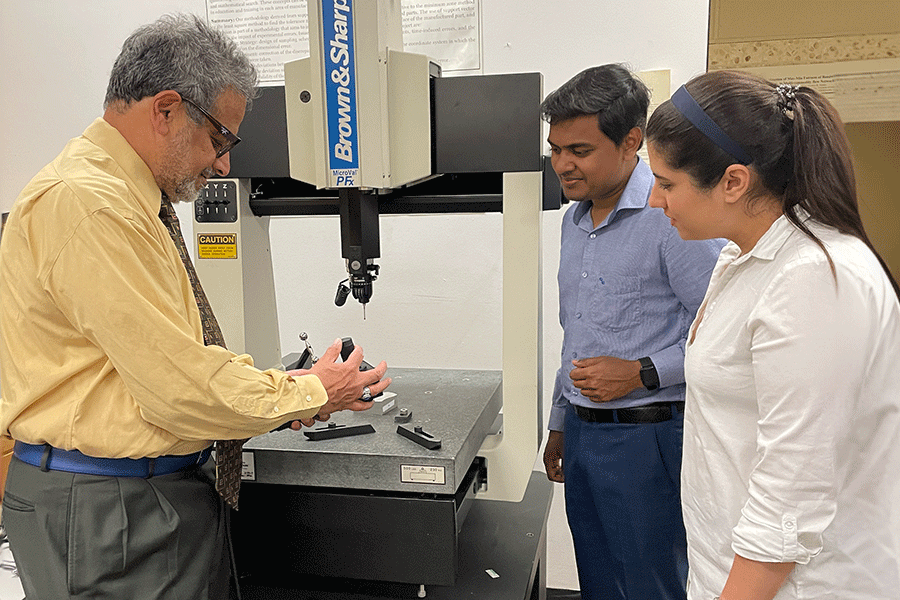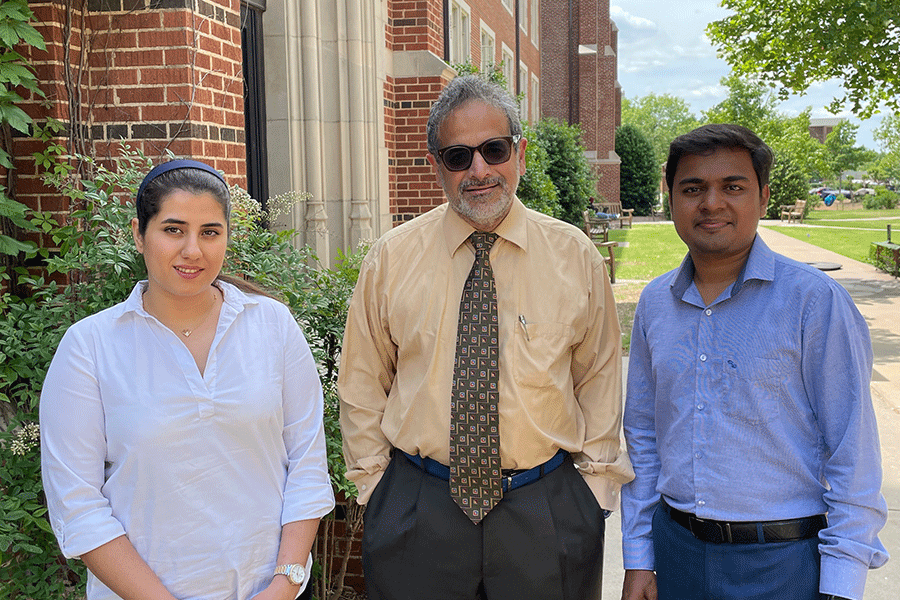
NORMAN, OKLA. – With the aging of the nation’s aviation fleet, the urgency for efficient and effective aircraft sustainment grows. While the aerospace industry supports over 2.2 million jobs nationally, the complexity of these maintenance processes is typically beyond the average person’s comprehension.
Shivakumar Raman, Ph.D., an industrial and systems engineer at the University of Oklahoma, is not your average person. With over 20 years of experience, he has developed an in-depth understanding of the aircraft sustainment process, meticulously analyzing and interpreting thousands of airplane parts in his research.
Raman’s newest project is funded by a $250,000 grant from The Knudsen Institute in Chickasaw, Oklahoma. He says the project is important to the aerospace and defense sectors, particularly concerning the critical task of sustainment for aging aircraft. He adds that the research aligns with the State of Oklahoma’s plan to diversify its economy in areas such as aerospace, autonomous systems and defense.
Raman uses reverse engineering that recaptures a part’s geometry and material to reproduce the part’s original function. It’s a detailed procedure that is part of shape engineering, which compiles the data required for sustaining aging aircraft.
Shape engineering is needed when an industrial part either partly or fully ceases to function as intended during service. Raman emphasizes the importance of shape engineering for outdated parts, especially when there is little or no technical data available to guide replacement fabrication.
“In reverse engineering, we determine the geometry and materials. We ask ourselves, ‘Can we speed it up? Can we make it more cost-effective? Can we improve the quality?’ Faster, cheaper, better is the mantra,” Raman said.
But faster-better-cheaper can be challenging when you’re working with thousands of airplane parts of varying geometries and materials.
The process includes obtaining data through techniques such as a laser scanning system that examines a variety of parts ranging from small components to larger assemblies.
“Scans of an object result in the collection of large-point cloud data sets used to reconstruct a digital model of the object,” Raman said. “The resulting digital model will then drive downstream applications such as prototype fabrication, re-engineering, materials characterization, structural finite-element analysis and simulation.”
Raman says through advancements in information technology, digitized models of large objects can be uploaded to digital repositories for downstream use by third parties and customers. Vendors and other approved production centers can then manufacture scanned objects in needed quantities. The prototypes are tested for material composition, strength and function as part of product development.
“The process takes a long time, from when you receive the part, to when you find somebody who can scan it for you, then make a computer-aided design model and a physical part,” Raman said.
Raman notes he and his researchers only work on a plane’s simpler mechanical parts and not critical parts such as landing gear or turbines. Those parts are often produced by major American aerospace companies – all of which Raman has worked with.
Once Raman’s team has analyzed and dissected the part, there are more steps. Now, they need to find out if the product even still exists.
“A lot of airplanes, especially military and commercial, were designed in the 1950s and 1960s and their parts go out of production. The original equipment manufacturer does not want to sell those parts or the parts no longer exist. Sometimes, the original manufacturer is no longer in business. Components can’t be around forever.
“The problem with this whole approach is that nobody has the know-how, because the original equipment manufacturer is no longer supporting the product or they are not in contention to be selling that product to you,” Raman said.
For instance, the Boeing 747 has over 1 million parts and warehouses cannot easily store every airplane component because of spatial constraints. “The demand fluctuates unpredictably – you might require a part every three years, every 30 years, or not at all. Hence, stockpiling becomes impractical.”
Raman highlights the scarcity of U.S. universities conducting such research, primarily due to equipment constraints. “Equipment limitations hinder widespread engagement in this area,” he said. “To delve deeper into this subject, understanding equipment constraints is crucial.”
“OU Engineering has several scanners that provide different levels of precision and accuracy. Measurement and part conformance verification are the primary functions of this equipment,” he said. “They often procure the data that must be suitably converted and input into computer-aided design systems. OU is unique in that we have a complete array of such equipment that can reverse engineer most mechanical parts used in industry.”
About the project:
Shivakumar Raman has been awarded funding for a project titled “Reverse Engineering and A Point Cloud Generation.” The funding was granted by the Knudsen Institute. The project, a part of a larger consortium, spans from Sept. 26, 2023, to Sept. 26, 2028.

About the University of Oklahoma
Founded in 1890, the University of Oklahoma is a public research university located in Norman, Oklahoma. As the state’s flagship university, OU serves the educational, cultural, economic and health care needs of the state, region and nation. OU was named the state’s highest-ranking university in U.S. News & World Report’s most recent Best Colleges list. For more information about the university, visit ou.edu.
New research from the University of Oklahoma has found that supplementing pregnant and lactating mice with a naturally occurring compound produced by healthy gut bacteria significantly lowered rates of fatty liver disease in their offspring as they aged.
Greg McFarquhar, director of the Cooperative Institute for Severe and High-Impact Weather Research (CIWRO) and Operations and a researcher at the University of Oklahoma, has been awarded funding from the U.S. Department of Defense (DoD) to compile and analyze cloud property measurements from around the world.
The University of Oklahoma professor Christina Giacona is making her fourth trip to the Grammy Awards next month, as four albums she worked on have received nominations from the Recording Academy.